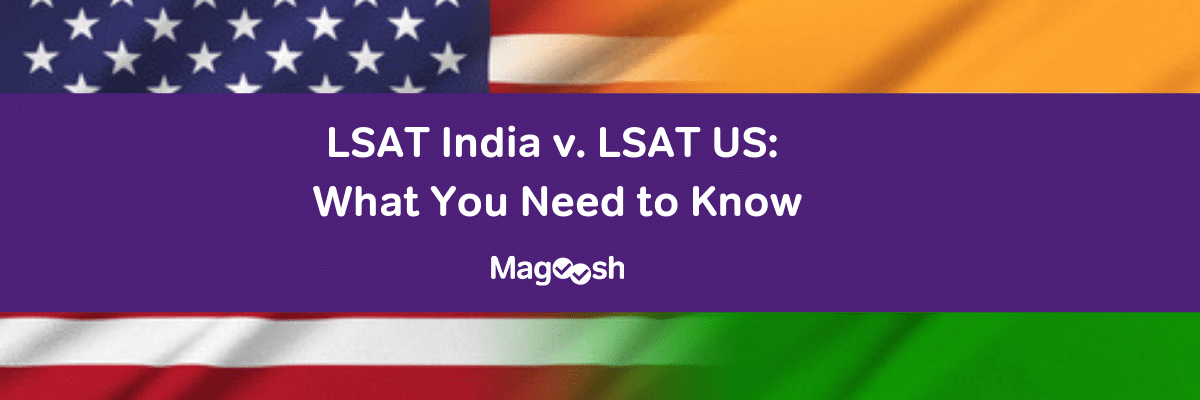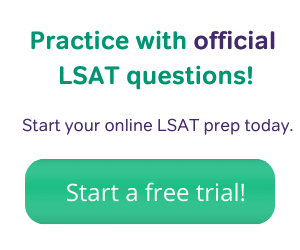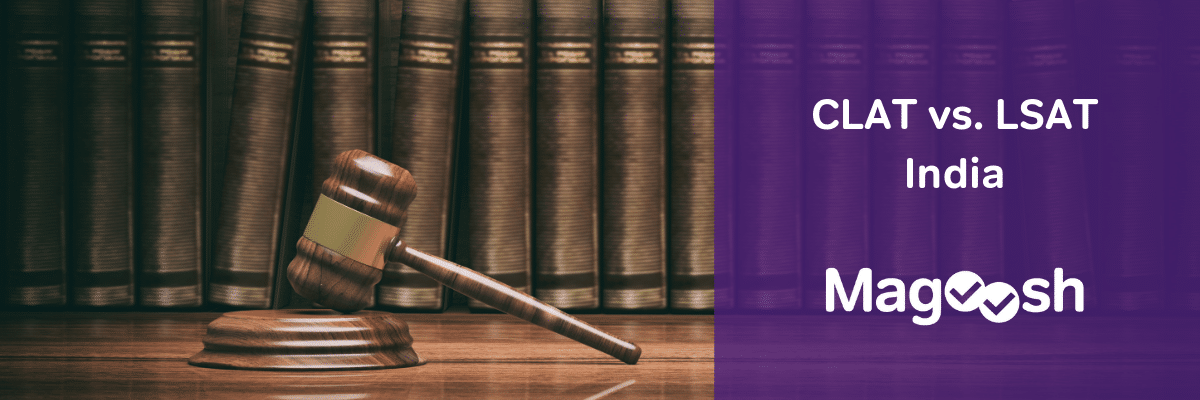
Since 2008, the Law School Admissions Council (LSAC) has offered the LSAT India for students interested in attending law school in India. If you’re looking to learn more about the LSAT India and whether it’s right for you, you’re in the right place. We’re going to take a look at what the LSAT India is, how it differs from the LSAT US, and help you decide which one is right for you.
Let’s start by reviewing what the LSAT India is exactly.
What is the LSAT India?
Like the LSAT in the US, the LSAT India is a standardized test designed by LSAC for students interested in attending law school. Similar to the US version, the Indian LSAT tests the analytical and critical reasoning skills needed to do well in law school and the practice of law.
Unlike in the US where students start law school after college, Indian students start studying law after high school as a five-year program. The LSAC designed the exam specifically for students interested in studying law in India—American law schools do not accept this score.
As of 2019, there are 53 law schools in India that accept the LSAT India and that number continues to grow as India’s economy does. These law schools are referred to as associated colleges in India.
Next, let’s take a look at how this exam compares with the US LSAT.
LSAT US vs LSAT India
One of the main differences is that the LSAT in India is a paper-and-pencil test while the LSAT US will be exclusively digital starting in September 2019. The other crucial difference between the exams is that the LSAT US includes an experimental section, which is not scored, and writing sample section.
Also, the scoring for the exams is quite different. The US LSAT is scored out of 180 possible points, while the LSAT India is scored based on percentiles. In other words, your score just reflects how you did compared to all other test takers who took the same LSAT as you.
While the overall scoring is different, one important thing about the scoring is the same—there is no penalty for wrong answers. So, no matter which LSAT you’re taking, be sure to mark an answer for every question!
In general, however, the exams are similar. Both have sections testing analytical reasoning, logical reasoning, and reading comprehension. Each section contains an average of 24 questions and test takers have 35 minutes to answer these questions. (So pacing is critical to both tests!)
Who Can Give LSAT from India?
The LSAT India is specifically for students interested in studying law in India. You cannot use your score on it to apply to American law schools—they only accept the US LSAT scores.
In order to take the LSAT India and be eligible to study law, you must meet certain eligibility requirements, which are released each year. These requirements vary by program, meaning the requirements are different for students interested in a five-year integrated program, a three-year LLB program, or an LLM program.
Now that you have a sense of who can give the LSAT in India, let’s take a look at how to give it.
How to Give the LSAT from India
If you’re a high school student in India interested in studying law, you will need to register to give the exam. You will need to register online with Pearson VUE India and pay the required fees. Once you’ve registered, you’ll receive a registration number, which you’ll use on your applications to college.
It’s important to note that there’s no fee refund if you later learn that you’re ineligible for admission to your school of choice. So, be sure to read through all of the eligibility requirements for each of your colleges and verify that you’re eligible before paying the LSAT registration fee.
Important Dates for the LSAT in India
Pearson VUE, who helps administer the LSAT in India, lists all of the important dates for registration, taking the exam, and getting your scores back for one exam at a time. This means you can view the deadlines for the next LSAT in India that will be offered, but not any further in advance. To give you a sense of the timeline and deadlines, here’s the schedule for the June 2019 LSAT India:
- October 16, 2018 through May 20, 2019 – Registration period open
- May 22, 2019 – June 1, 2019 – Admit Card Release
- June 2, 2019 – 2019 Test Date
- June 20, 2019 – Results are announced
Let’s turn next to look at how to prepare and do well on the LSAT in India.
How to Prep for the LSAT
Like the LSAT in the US, the LSAT India requires a good deal of preparation to do well. You should plan to study for at least three months to adequately prepare for the types of questions you will be asked. The skills tested and the questions presented will likely be different than the tests you’ve taken in the past.
You should plan to start by purchasing the Official LSAT India Handbook, which you can do as part of the registration process. The Handbook is published by the LSAC and contains every question type you’ll see on test day. Also, be sure to review the Official LSAT India Test Taking Tips, which include some ideas for how to structure your studying for the LSAT. From there, you should plan to add additional study materials based on your particular strengths and weaknesses.
Recap
The LSAT India is a standardized exam that tests your ability to think and reason critically. It is intended for students who want to study law in India and cannot be used for admission to law schools in other countries. Be sure to review the eligibility requirements for the associated colleges prior to registering for the LSAT in India. Once you have registered, be sure to dedicate lots of time to studying to ensure your best chances of getting in to study law!







Leave a Reply